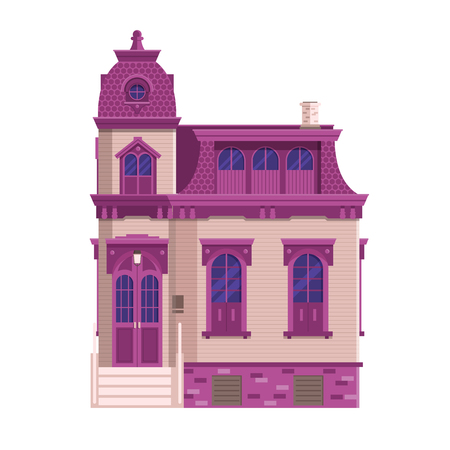1. Introduction to Vastu and Its Importance for Staircase Design
Vastu Shastra, the ancient Indian science of architecture and spatial harmony, is deeply rooted in the cultural and spiritual fabric of India. For centuries, Vastu principles have guided the way Indian homes are designed and constructed, focusing on channeling positive energies and minimizing negative influences. In today’s modern Indian homes, these age-old guidelines are still respected, especially when it comes to critical elements like staircases. According to Vastu, staircases are not merely functional structures—they act as conduits for energy flow between different levels of a home. An improperly placed or designed staircase can disturb the energy balance, potentially leading to discomfort or challenges for residents. Therefore, understanding the basics of Vastu and its specific recommendations for staircase design is essential for creating a harmonious living environment that supports wellbeing, prosperity, and peace within the household.
2. Ideal Placement and Direction for Staircases
According to Vastu Shastra, the placement and direction of staircases play a crucial role in maintaining positive energy flow within a modern Indian home. Choosing the right location not only ensures harmony but also enhances prosperity and overall well-being for all family members.
Recommended Locations for Staircases
Vastu experts advise that staircases should ideally be constructed in the south, west, or southwest part of the house. These directions are believed to ground excess energy and prevent financial instability. Avoid placing staircases in the northeast as it may disrupt the inflow of positive energy, which is considered highly auspicious in Indian homes.
Practical Examples for Modern Homes
In modern Indian apartments, where space is often limited, it’s common to see staircases placed near entrances or living areas. If possible, align the staircase towards the west or south side of your flat. For duplexes or independent houses, plan the staircase away from pooja rooms or kitchens to maintain spiritual purity and health.
Staircase Direction Table as per Vastu
| Direction | Suitability (as per Vastu) | Application in Modern Homes |
|---|---|---|
| South-West (SW) | Most Suitable | Main internal staircases; best for villas & duplexes |
| South or West | Suitable | Apartments & duplexes; can be used near entrances |
| North-East (NE) | Avoid | Avoid in any structure; disturbs positive energy flow |
| North or East | Less Preferred | If unavoidable, ensure remedies like Vastu pyramids are used |
Always ensure that the staircase rises from north to south or east to west within your home. This orientation supports the natural movement of energy and is widely followed across Indian households. By adhering to these placements and directions, you invite balance and peace into your contemporary living space while honoring traditional Vastu principles.

3. Vastu-Compliant Staircase Shapes and Materials
When designing staircases for modern Indian homes, it is essential to consider both Vastu guidelines and contemporary aesthetics. According to Vastu Shastra, the shape and materials of a staircase can significantly influence the energy flow within your home. Traditionally, rectangular or square-shaped staircases are considered most auspicious. These shapes promote stability and allow for a harmonious transition between floors, aligning well with modern minimalist designs popular in urban India.
Design Considerations for Modern Homes
While spiral staircases may look visually appealing, Vastu advises against them as they can disrupt the positive flow of energy. Instead, opt for straight or L-shaped designs that are practical and safe for everyday use. Ensure that the staircase does not directly face the main entrance or end abruptly at a door, as this may cause energy stagnation. In modern homes where space is limited, innovative solutions like floating stairs can be used while adhering to Vastu principles by maintaining solid risers and consistent steps.
Preferred Materials According to Vastu
The choice of materials also plays a vital role in ensuring a balanced environment. Wood, stone, and marble are highly recommended for their natural properties and durability. These materials not only enhance the aesthetic appeal but also resonate well with the earthy elements emphasized in Vastu Shastra. Metallic staircases, though trendy, should be used cautiously—preferably in combination with wood—to avoid excessive heat or harshness in the home’s atmosphere.
A Harmonious Blend of Tradition and Modernity
By thoughtfully selecting shapes and materials that respect both Vastu wisdom and modern design trends, homeowners can create staircases that are not just functional pathways but also sources of positive energy. This balance supports overall wellbeing while adding a touch of contemporary elegance to Indian interiors.
4. Common Vastu Dos and Donts for Staircases
Designing staircases in accordance with Vastu principles is a thoughtful process deeply rooted in Indian tradition and contemporary wisdom. Whether you are building a new home or renovating an existing one, following these essential guidelines can bring harmony, prosperity, and well-being to your space. Below, we highlight key dos and don’ts, common mistakes to avoid, and clarify popular misconceptions that often circulate among Indian homeowners and architects.
Essential Vastu Guidelines for Staircase Placement
| Dos | Donts |
|---|---|
| Place staircases in the South, West, or South-West corner of the house as per Vastu norms. | Avoid constructing staircases in the North-East direction as it may block positive energy flow. |
| Always ascend stairs in a clockwise direction for good energy movement. | Do not build circular staircases; they can create instability and stress within the household. |
| Use even number of steps (preferably not ending with zero), ensuring each step is uniform in size and height. | Avoid odd number of steps, especially 11, 15, or 21 as these numbers are considered inauspicious by many Vastu experts. |
| Keep the area beneath the staircase clutter-free or use it for storage of light items only. | Never use the space under stairs for placing puja rooms, safes, or water tanks as this is seen as highly inauspicious. |
Mistakes to Avoid: Insights from Indian Homeowners & Architects
- Ignoring Light and Ventilation: Many overlook the importance of proper lighting near staircases. Dark stairwells are believed to attract stagnant energy—always ensure adequate natural or artificial light.
- Overlooking Safety: In pursuit of aesthetics, some designs compromise on safety. Slippery materials or lack of handrails can cause accidents; always prioritize safety features aligned with Vastu recommendations.
- Neglecting Regular Maintenance: Creaky steps or broken tiles disrupt energy flow and should be repaired promptly to maintain positivity at home.
Popular Misconceptions Clarified
- Staircase Material Myths: Some believe only specific materials like wood or marble are Vastu-compliant. In reality, any sturdy material can be used if other Vastu guidelines are followed.
- The Number Game: While step count matters, what’s more important is uniformity and stability rather than obsessing over numerology alone.
- Sacred Symbols Under Stairs: Placing religious symbols under staircases does not neutralize negative effects; it’s better to keep this area simple and clutter-free.
Advice from Local Experts
Indian architects frequently remind homeowners to balance traditional beliefs with modern design sensibilities. When in doubt, consult a local Vastu consultant who understands both your family’s needs and regional nuances. By mindfully integrating these guidelines into your staircase design, you invite peace, prosperity, and positive vibes into your modern Indian home.
5. Decor and Colour Tips for Staircases as per Vastu
Staircases in Indian homes are more than just functional structures—they hold a special place in the energy flow of your house. According to Vastu Shastra, the colours and decor you choose for your staircase can greatly influence positivity and harmony within the home. When selecting colours, opt for subtle and earthy tones such as beige, light brown, cream, or light grey. These shades are believed to promote tranquillity and balance, while also blending well with modern Indian interiors. Avoid dark hues like red or black on staircases, as they may attract negative energies or create a sense of heaviness.
For decorative elements, consider adorning your staircase walls with traditional artwork such as Madhubani paintings, Warli art, or framed images of auspicious symbols like the lotus or Om. Placing small brass diyas or bells at the base or along the steps (without causing obstruction) can add an elegant yet spiritual touch that resonates with Indian culture. If space allows, keeping potted plants with rounded leaves at the foot of the staircase is recommended—these bring freshness and life while symbolising growth and prosperity according to Vastu principles.
It’s also auspicious to install a nameplate or Swastik symbol near the staircase entry if it leads to an upper floor, inviting blessings and safeguarding the family. Steer clear of displaying images depicting sorrow, violence, or wild animals on staircase walls, as these can disturb the peaceful vibrations intended by Vastu Shastra. By integrating these thoughtful decor and colour choices inspired by India’s rich heritage and spiritual wisdom, you create a space that not only looks beautiful but also radiates positive energy throughout your home.
6. Remedies for Existing Vastu Defects in Staircases
In many modern Indian homes, staircases may not always be constructed according to ideal Vastu principles. However, there are practical and culturally resonant remedies that can help harmonize energies and correct common defects without major renovations. Below are some simple and effective Vastu solutions rooted in traditional Indian wisdom:
Identify Common Staircase Vastu Doshas
The first step is to recognize the typical Vastu faults—such as staircases placed in the northeast direction, odd-numbered steps, or broken handrails. These doshas can disturb the flow of positive energy (prana) within the home.
Remedy 1: Energize With Sacred Symbols
Placing auspicious symbols like Swastika, Om, or Shree Yantra at the base or landing of the staircase invites positivity. You can also hang a small brass bell or tie a red cloth with turmeric powder at the starting point to neutralize negative vibrations.
Remedy 2: Use Colours Wisely
If your staircase is located in an inauspicious zone, paint it in light shades such as off-white, cream, or pastel yellow. Avoid dark and red tones as they may intensify imbalances. Traditional Indian lime wash (chuna) can also help balance energies naturally.
Remedy 3: Place Plants or Water Bowls
Positioning green plants (like Tulsi or Money Plant) near the base of the stairs promotes fresh prana. For staircases in the northeast, keep a bowl of water with lemon slices; this absorbs negativity and brings calmness.
Remedy 4: Install Lighting and Mirrors Correctly
Bright lighting on stairs dispels stagnation and gloom. Avoid placing mirrors directly opposite or under staircases; instead, position them on adjacent walls if required for aesthetic purposes.
Consult Local Pandit or Vastu Expert
If defects seem complex, seek guidance from a local pandit or Vastu consultant who understands regional customs. They may suggest specific mantras, yantras, or poojas tailored to your family’s tradition.
By incorporating these time-honoured remedies into your already-constructed home, you can restore balance, invite prosperity, and maintain harmony within your living space—ensuring that the ancient wisdom of Vastu continues to bless your modern abode.
7. Conclusion: Harmonising Modern Design with Vastu Wisdom
In the vibrant tapestry of modern Indian homes, the staircase is much more than a functional connector between floors—it becomes a channel for positive energy and well-being when designed in alignment with Vastu Shastra. By thoughtfully blending age-old Vastu principles with contemporary aesthetics, homeowners can create spaces that radiate harmony, prosperity, and tranquility. Whether you are constructing a new home in Gurgaon or renovating an apartment in Mumbai, incorporating Vastu guidelines—like optimal direction, suitable materials, and mindful placement—can have a profound impact on daily life. It is not about choosing tradition over modernity, but about weaving them together, allowing your staircase to become a symbol of upward growth and balance. Remember, the subtle shifts guided by Vastu are not just architectural choices but invitations for positivity to flow into your living space. When design meets intention, every step you take at home can be filled with peace, progress, and spiritual well-being—the essence of a truly blissful Indian home.


